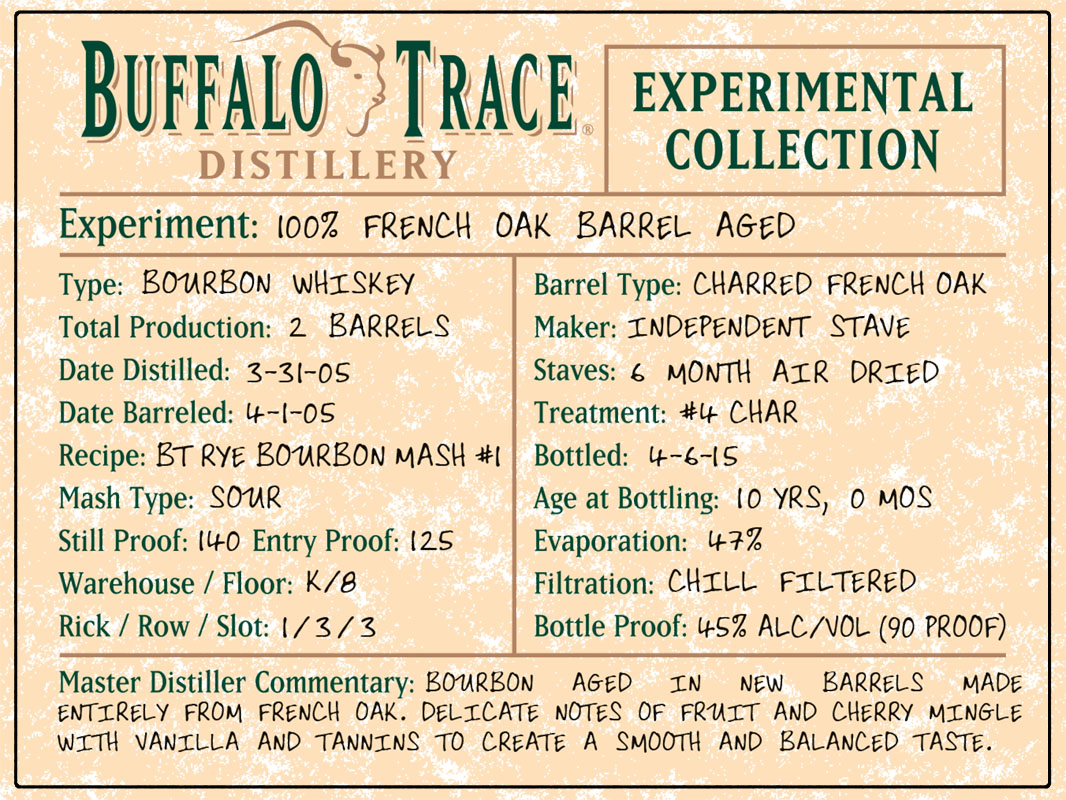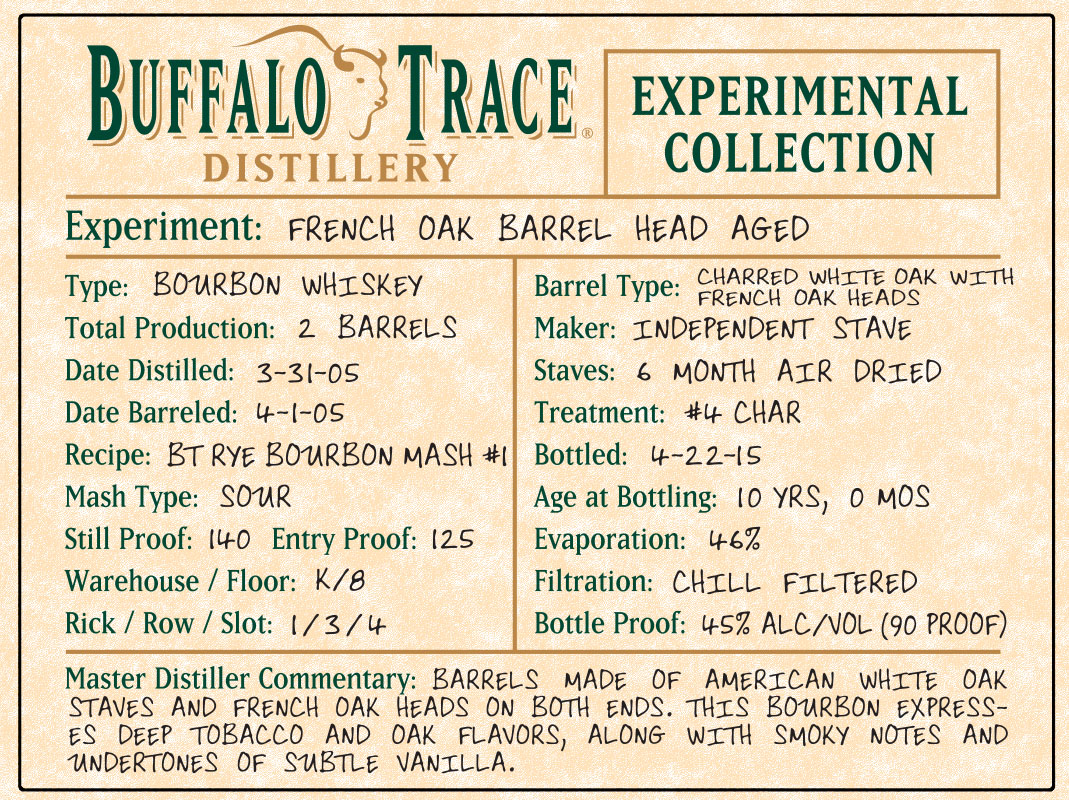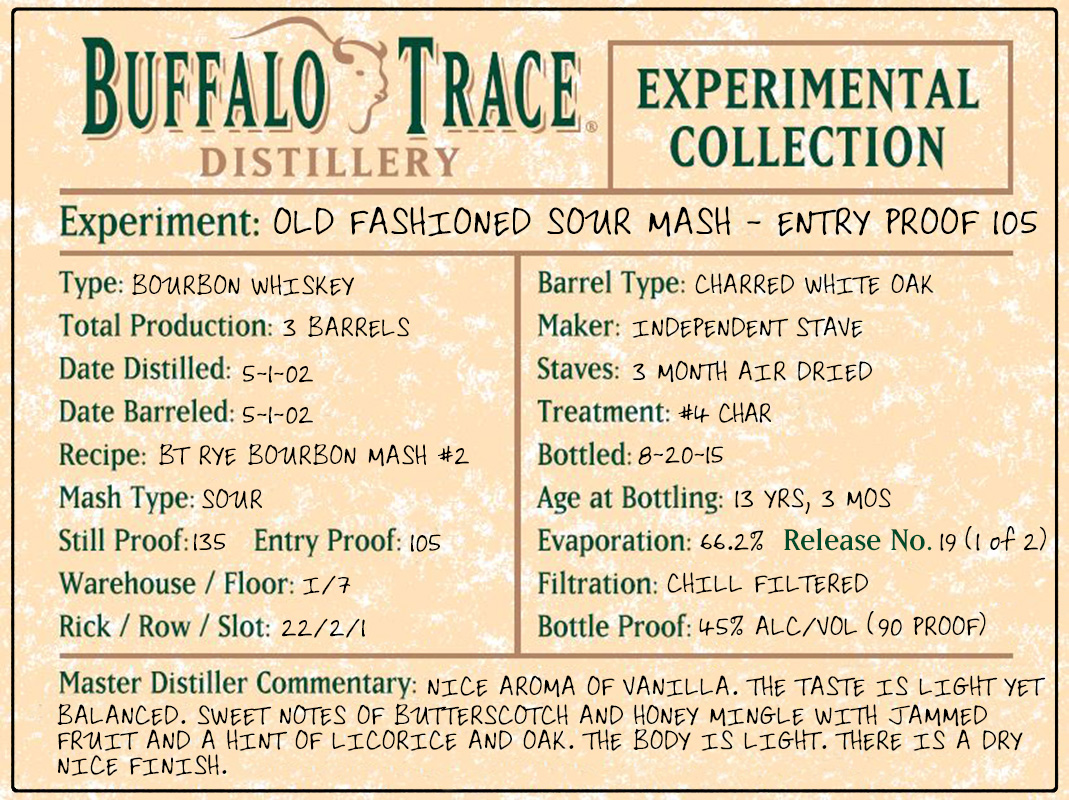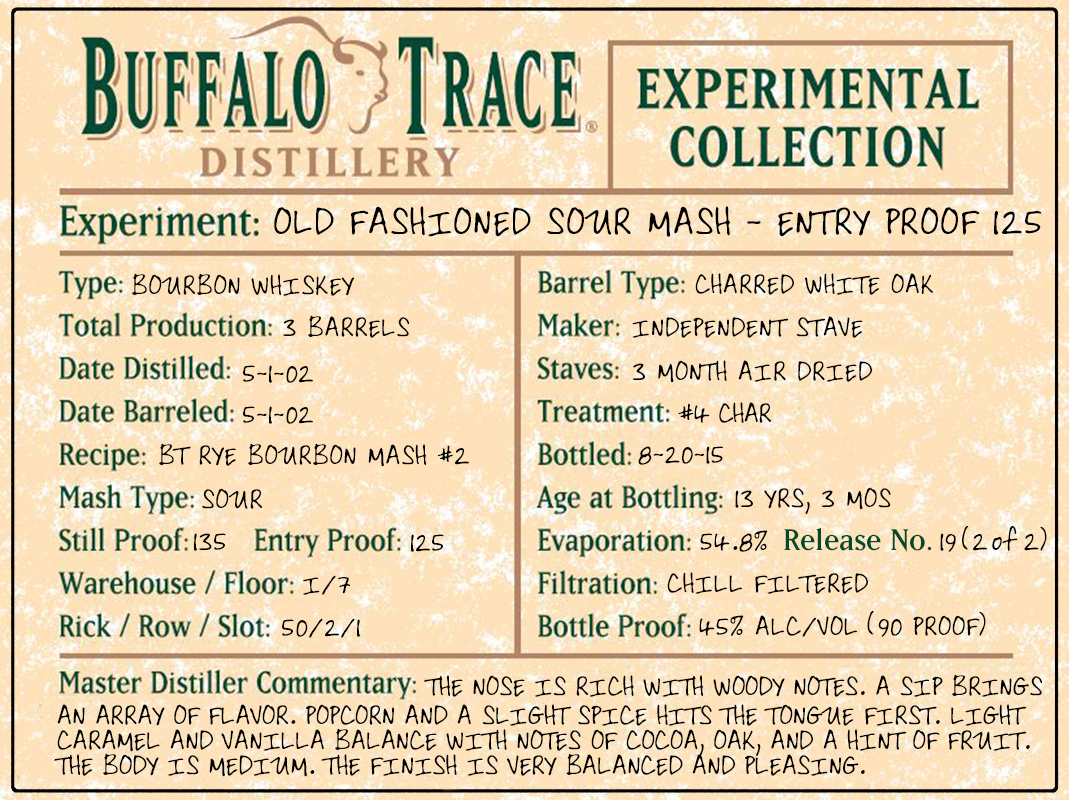2015 Releases
Release 18: French Oak Barrel Variations
A ten-year experiment explored the variation that French oak can impart on bourbon flavor. Two different barrel types were created, one made entirely of French oak, and another using French oak heads, but American white oak staves. Both barrels were made from staves that were air-dried for six months and the barrels were charred for 55 seconds. The same bourbon mash bill was placed in barrels and after ten years, the taste variation was evaluated.
-
100% French Oak Barrels
Barrels were constructed entirely of French oak. Delicate notes of fruit and cherry mingle with vanilla and tannins to create a smooth and balanced taste.

-
French Oak Barrel Head Aged
Barrels were made of American white oak staves and French oak heads on both ends. This bourbon expresses deep tobacco and oak flavors along with smoky notes of subtle vanilla.

Release 19: Old Fashioned Sour Mash Bourbon
Years ago, a conversation between retired Buffalo Trace workers reminisced about an old method of making “sour mash bourbon.” Some recall it was used as far back as Colonel Taylor’s day in the early 1900’s. Using this process, the bourbon mash is cooked and cooled to standard, but then left to sit, allowing it to sour, before yeast is added to start the fermentation process. This old fashioned method of creating sour mash bourbon was replaced with the more commonly found method used today because it was so much more labor intensive. Bourbon was entered into barrels at 2 different entry proofs – 105 and 125.
-
Old Fashioned Sour Mash Bourbon 105 Entry Proof
Bourbon entered into the barrel at 105 proof. Aged for 13 years. Bottled at 90 proof. Nice aroma of vanilla . The taste is light yet balanced. Sweet notes of butterscotch and honey mingle with jammed fruit and a hit of licorice and oack. The body is light. There is a dry nice finish.

-
Old Fashioned Sour Mash Bourbon 125 Entry Proof
Bourbon placed into barrels at 125 proof. Aged for 13 years and bottled at 90 proof. The nose is rich with woody notes. A sip brings an array of flavor. Popcorn and a slight spice hits the tongue first. Light caramel and vanilla balance with notes of cocoa., oak, and a hint of fruit. The body is medium. The finish is very balanced and pleasing.






